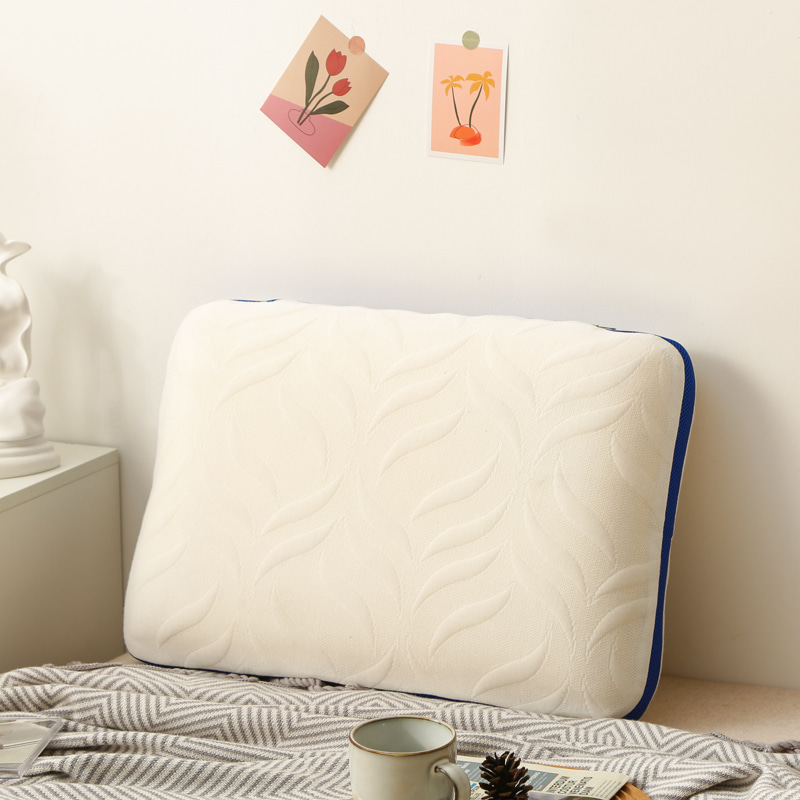The density and hardness (firmness) of memory foam pillows are significant because they directly affect the pillow's support, comfort, durability, and suitability for different sleepers. Understanding these characteristics helps in selecting the right memory foam pillow for individual needs and preferences. Here’s an in-depth look at their significance:
Definition: Density is measured in pounds per cubic foot (pcf) or kilograms per cubic meter (kg/m³) and indicates how much material is packed into a given volume of the foam.Support and Conformance:High Density: Offers greater support and conforms closely to the contours of the head and neck, providing excellent alignment and pressure relief.Low Density: Provides a softer feel but may not offer the same level of support or conform as closely to the body’s shape.
Durability:High Density: More durable and retains its shape and supportive qualities over a longer period, making it a better long-term investment.Low Density: Tends to break down more quickly, losing its supportive properties and necessitating more frequent replacements.Temperature Sensitivity:High Density: Typically more sensitive to temperature, softening with body heat and offering a customized fit. However, it may retain more heat, which could be uncomfortable for some sleepers.Low Density: Less temperature-sensitive, generally feeling cooler, but may not contour as effectively.
Motion Isolation:High Density: Provides better motion isolation, making it ideal for people who share a bed, as it minimizes the disturbance caused by movements.Definition: Firmness refers to how soft or hard the pillow feels. It is a subjective measure, often described as soft, medium, or firm.
Support for Different Sleep Positions:Firm Pillow: Better for back and side sleepers, as it provides the necessary support to keep the head and neck aligned with the spine.Soft Pillow: More suitable for stomach sleepers, as it allows the head to sink in more, reducing strain on the neck.Pressure Relief:Firm Pillow: While offering solid support, it may provide less pressure relief because it doesn’t contour as easily to the head and neck.Soft Pillow: Provides better pressure relief by contouring more closely, which can reduce pressure points and enhance comfort.Personal Comfort:Firmness Levels: Highly subjective; personal preferences play a significant role in determining the ideal firmness. Some people prefer the solid support of a firm pillow, while others favor the plush comfort of a softer pillow.

Spinal Alignment:Proper Alignment: The right firmness ensures proper spinal alignment, which is crucial for preventing neck and back pain. A pillow that’s too soft or too firm can lead to misalignment and discomfort.
Balancing Density and Hardness:High Density + High Firmness:Provides maximum support and durability but might feel too hard for some sleepers.High Density + Low Firmness:Offers good support with added comfort, suitable for a range of sleeping positions.Low Density + High Firmness:May feel less supportive and could wear out faster.Low Density + Low Firmness:Offers a plush feel but lacks long-term support and durability.
Sleep Position:Back and side sleepers generally benefit from firmer, higher-density pillows for better support.
Stomach sleepers might prefer softer, lower-density pillows to prevent neck strain.Personal Preferences:Individuals with a preference for a firmer or softer feel should choose accordingly, considering both density and firmness.Health Considerations:People with neck or back issues should prioritize support and spinal alignment, often found in higher-density, medium to firm pillows.
The density and hardness of memory foam pillows are crucial in determining their performance. High-density memory foam provides superior support, durability, and conformance, while the firmness level affects comfort, pressure relief, and suitability for different sleeping positions. Balancing these factors according to individual needs and preferences ensures a comfortable and supportive sleep experience.